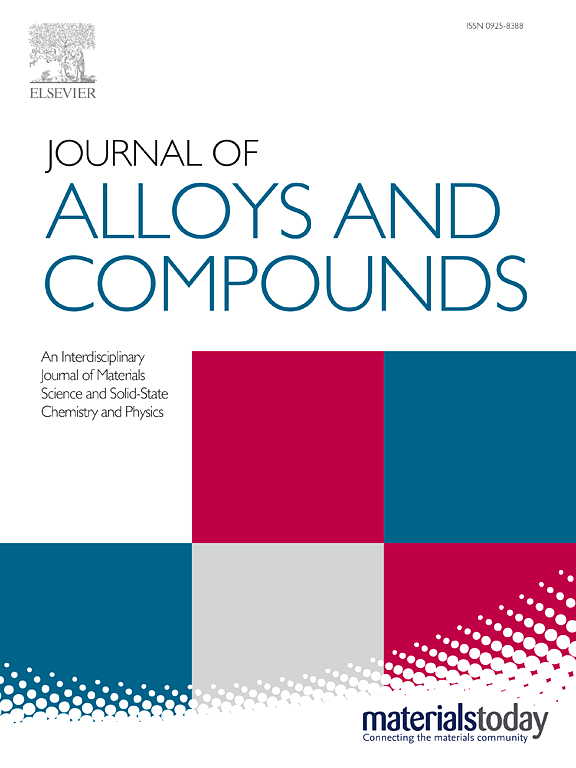Nickel mesh-based catalysts with crystalline-amorphous synergistic catalytic effect for enhanced efficiency and stability in alkaline water electrolysis at ampere-level current densities
IF 5.8
2区 材料科学
Q2 CHEMISTRY, PHYSICAL
引用次数: 0
Abstract
Amid the pressing need for sustainable hydrogen production, developing high-performance electrocatalysts for alkaline electrolysis using nickel-based materials has become increasingly important, which are widely used in industry due to their robustness and cost-effectiveness. In this study, we report the electrochemical deposition-fabricated P-Co(OH)2/NM and P-NiFe catalysts, which shows excellent performance in the hydrogen evolution reaction and oxygen evolution reaction, respectively. Specifically, P-Co(OH)2/NM achieved overpotentials of 41 mV at 10 mA cm−2 and 240 mV at 1000 mA cm−2, while P-NiFe compound exhibited overpotentials of 278 mV and 403 mV at these currents, respectively. These improvements are attributed to the synergistic effects of crystalline and amorphous phases and the unique porous structure formed via the dynamic hydrogen bubble template method. The assembled electrolyzer demonstrated superior overall water splitting (OWS) performance, requiring only 1.57 V at 10 mA cm−2 and 1.81 V at 1000 mA cm−2, with remarkable stability exceeding 1000 h. When the OWS temperature is increased to 60 °C, the performance was further enhanced, achieving 1000 mA cm−2 at just 1.72 V. With their simple synthesis and unique structure, these catalysts hold great promise for industrial applications.

具有结晶-非晶协同催化效应的镍网基催化剂在安培电流密度下提高碱性电解效率和稳定性
在可持续制氢的迫切需求下,开发高性能的镍基碱性电解电催化剂变得越来越重要,这种催化剂因其坚固性和成本效益而在工业上得到广泛应用。在本研究中,我们报道了电化学沉积制备的P-Co(OH)2/NM和P-NiFe催化剂,分别在析氢反应和析氧反应中表现出优异的性能。具体来说,P-Co(OH)2/NM在10 mA cm-2和1000 mA cm-2下的过电位分别为41 mV和240 mV,而P-NiFe化合物在这两种电流下的过电位分别为278 mV和403 mV。这些改进归功于结晶相和非晶相的协同作用以及动态氢泡模板法形成的独特多孔结构。组装后的电解槽整体水分解(OWS)性能优异,在10 mA cm-2时仅需1.57 V,在1000 mA cm-2时仅需1.81 V,超过1000小时的稳定性显著。当OWS温度升高至60°C时,性能进一步增强,在1.72 V的条件下实现1000 mA cm-2。这些催化剂合成简单,结构独特,具有广阔的工业应用前景。
本文章由计算机程序翻译,如有差异,请以英文原文为准。
求助全文
约1分钟内获得全文
求助全文
来源期刊

Journal of Alloys and Compounds
工程技术-材料科学:综合
CiteScore
11.10
自引率
14.50%
发文量
5146
审稿时长
67 days
期刊介绍:
The Journal of Alloys and Compounds is intended to serve as an international medium for the publication of work on solid materials comprising compounds as well as alloys. Its great strength lies in the diversity of discipline which it encompasses, drawing together results from materials science, solid-state chemistry and physics.
 求助内容:
求助内容: 应助结果提醒方式:
应助结果提醒方式:


